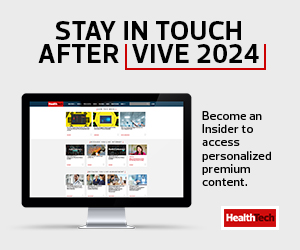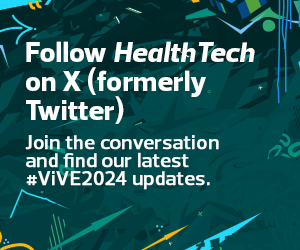What Do Innovation Centers Do for Healthcare Organizations?
At Providence, the innovation center doesn’t own innovation across the entire system. Rather, it focuses on digital innovation, said Sara Vaezy, executive vice president and chief strategy and digital officer. The center’s purpose is to address problems that have durability within the system but have not yet been solved.
“We go through an innovation process to identify and get really crisp on the problem. We’re not going high-level, like access or engagement. We’re getting very specific on the problem,” said Vaezy.
Once her team has prioritized problems, it goes through a systematic build/buy analysis beyond the feature-or-functionality level. The team also asks several questions: Does the business model match what the team is trying to accomplish? Is it flexible enough to grow into? What are the health of the companies being considered? Providence looks at its core partners as a starting point.
“Innovation isn’t just about creating or building. It’s really about a creative way of solving a problem,” Vaezy explained. “If we can’t find another solution, we will build, but we have a specific thesis around building.”
Building requires people, time and money to solve the problem, she said. Providence only builds when it has no other options.
Chris Waugh, vice president and chief design and innovation officer at Sutter Health, said being in a health system is an “unfair advantage” in innovation because the organization has a front-row seat to 3 million patients and 10,000 doctors. Innovation leaders can pick up meaningful insights around what needs to be done directly from the source. Having that direct access is key in the system’s ability to move quickly, Waugh said.
READ MORE: Healthcare embraces AI as industry leaders seek support for clinicians.
His team puts a major emphasis on design that goes beyond implementing a solution but also considers the experience architecture the organization is trying to create. Design can lead to breaking the rules of the traditional system and reinventing care models through disruptive solutions.
According to Rebecca Kaul, senior vice president and chief of digital innovation and transformation at Northwell Health, designing, defining or building an innovation center will change depending on the needs, culture and readiness of an organization, in addition to timing.
At Northwell, Kaul said, one of the biggest problems is that there are so many innovators in the organization — and so many problems to be solved — that the question becomes how to activate those innovators across the health system. Supporting all of those innovators across the ecosystem by accelerating the ability to set up environments, access data and access language models is a major focus for the innovation center, creating an ecosystem where people can share different AI language models to solve for problems in a safe environment.
Kaul emphasized the importance of working with partners and those in the industry to solve for problems, and doing design exercises to explore what the experience of the future will look like and what capabilities will be needed. Those capabilities can’t be focused solely on technology because, Kaul said, “putting great technology into a bad process is going to fail.”
At Houston Methodist, the health system approaches innovation with key operational and IT leaders working together cohesively, said Michelle Stansbury, vice president of innovation and IT applications. The benefit of that approach is that the team can scale solutions quickly across the organization without having to convince management to go along with the innovation.













